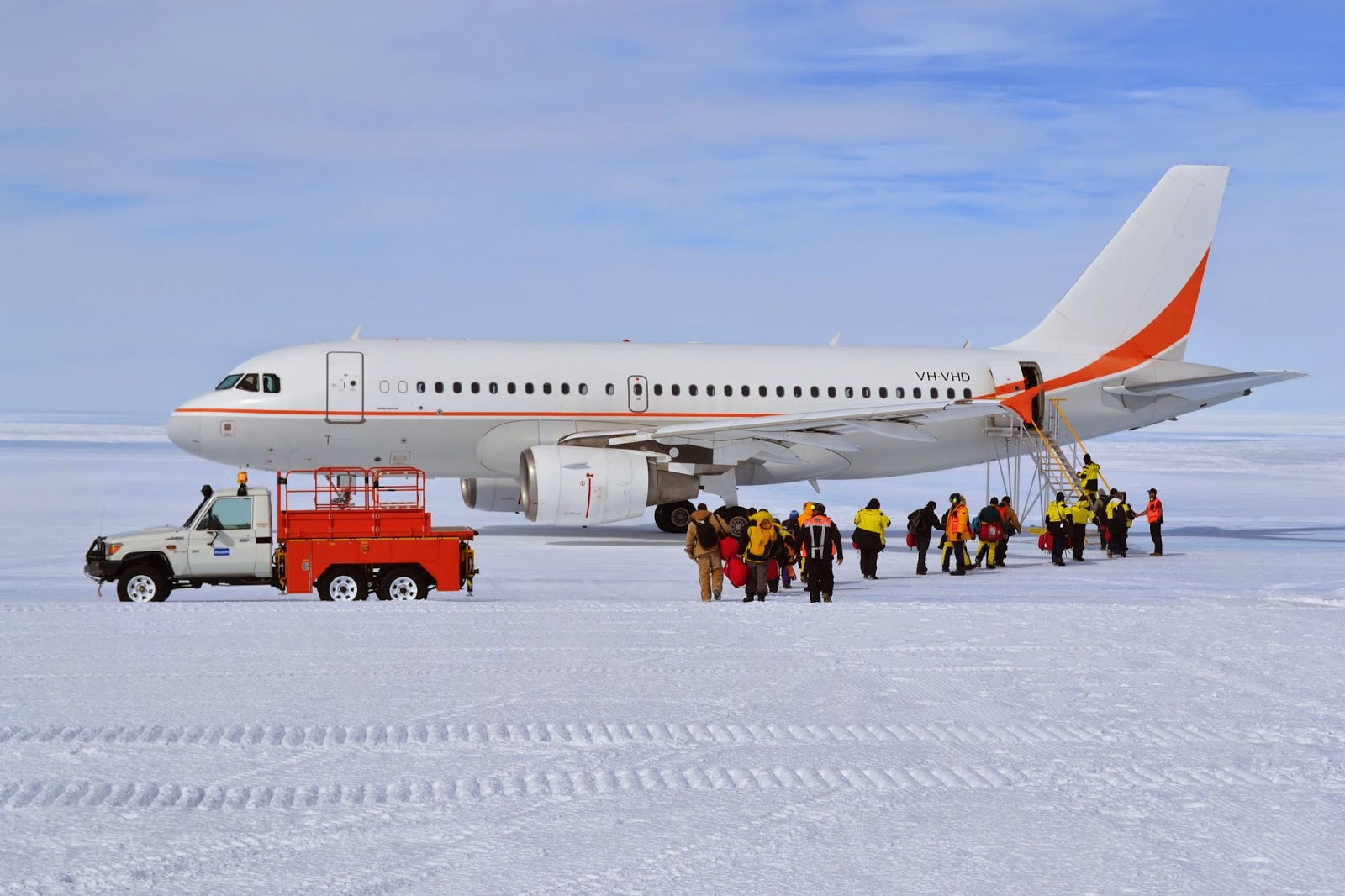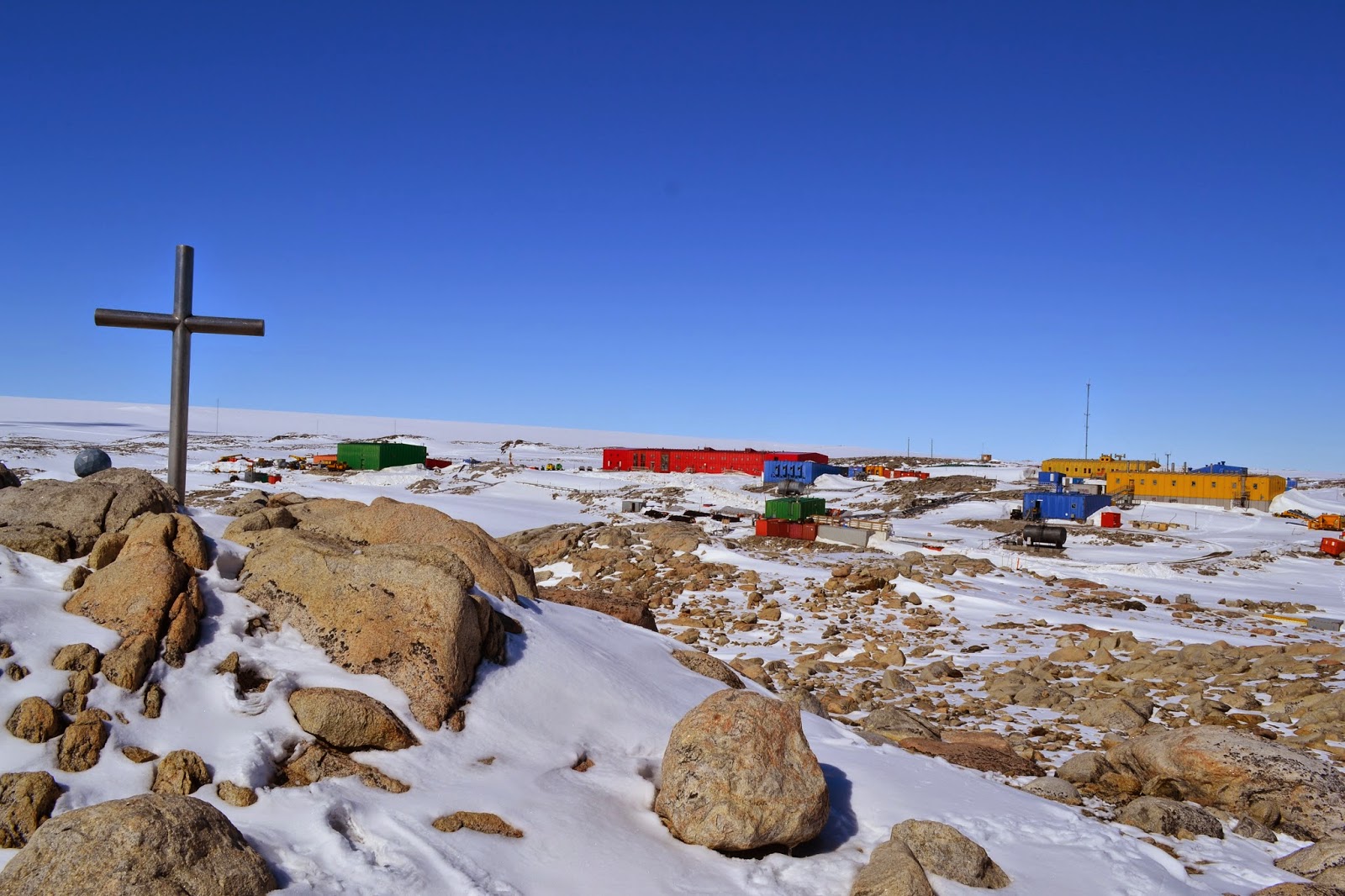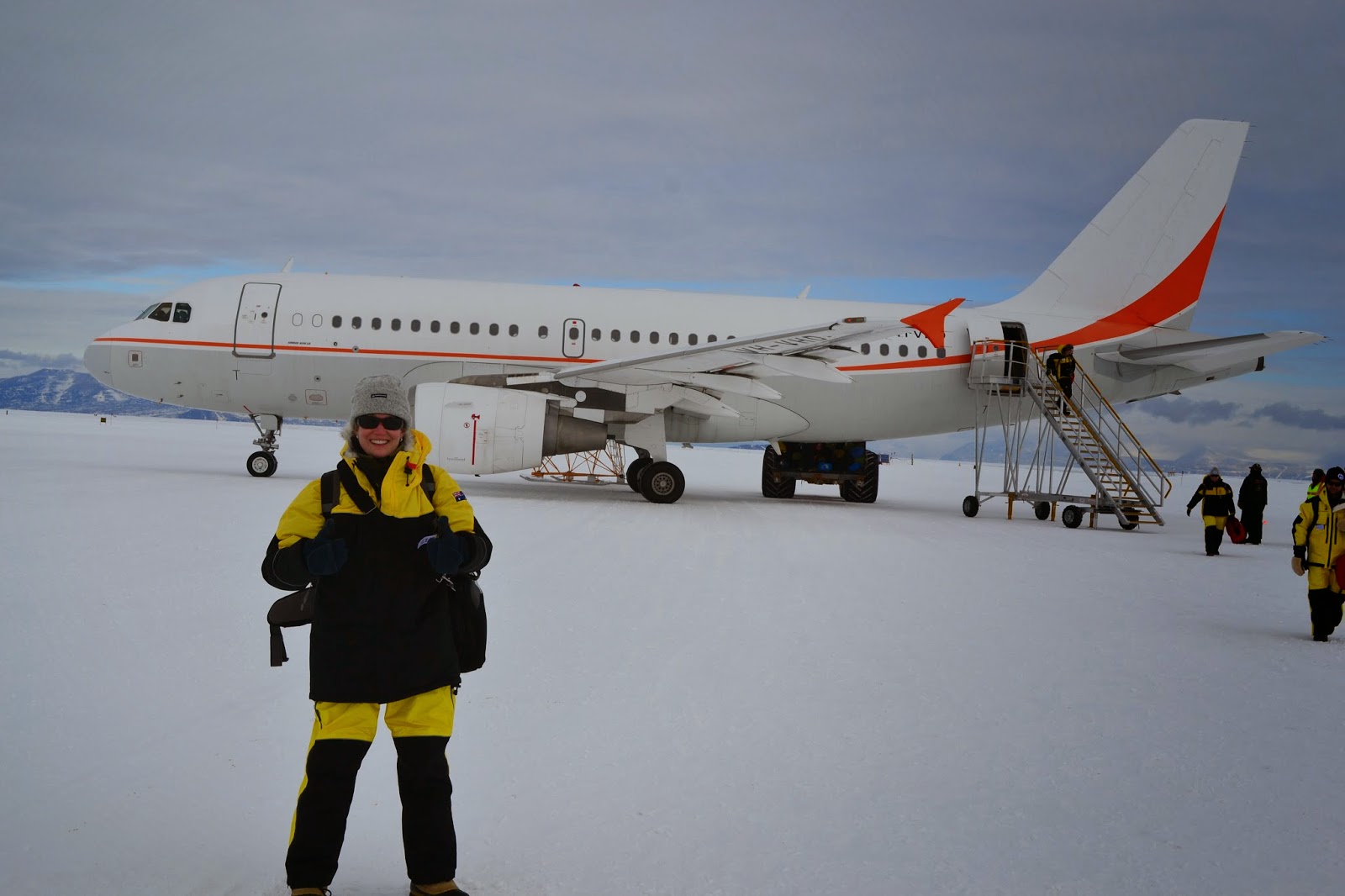It has been a dream of
mine for at least the past 15 years to travel to and work in Antarctica. This
dream became a reality in early November 2014 after a false start in
2013.
I was employed as an
Antarctic Medical Practitioner to assist with the 2014/15 Summer season out of
Casey Station, one of the 3 continental Australian stations (Macquarie Island,
the Subantarctic Station was where I wintered briefly in 2011).
On the morning (04:00am) of Wednesday 5th November I embarked on
the trip of a lifetime with 38 other expeditioners with the Australian
Antarctic Division. We flew on the airbus A319 from Hobart to McMurdo Station,
which is an American station. We were to directly transfer to a Hercules LC30 once
we landed at Pegasus airfield and fly on to Casey station. Instead we were
stranded due to poor weather at Casey and lack of staffing at McMurdo for a
week. Which was a blessing in disguise...
McMurdo is
supported by the Federal government under the auspice of the National Science
Foundation. I had flown on the NSF Hercs in Greenland 4-6 years earlier with my
work as an Expedition Doctor with a Danish Science group on the ice sheet.
It sits on Ross Island in
the NZ territory, housing up to over 1000 personnel during busy Summer periods.
It resides under the ever watchful eye of Mt Erebus - an active volcano,
infamous for the Air NZ plane crash in 1979 (auspicious year!), which killed
all 257 people on board.
The rumour was the
recovered bodies were kept in McMurdo gym until repatriation back to their
homeland. This was where we all spent the first 3 nights on cot beds until
there was room in the dorms with the US personnel moving on to their positions
at the South Pole or WAIS Divide remote camp.
Mt Erebus was amazing, active since 1972, tucked behind the Mountainous range behind
McMurdo.
Regardless, the scenery was stunning.
Scott's Hut is on the peninsula just down from station which is
currently under restoration by the kiwis, who diligently come over from Scott
base, 3km away to voluntarily maintain and document the historic site. It was
an honour to see the hut so well preserved after over a century since the fated
expedition set out to claim the South Pole (only to be beaten by
Amundsen).
St Vincent's Cross is close by, commemorating the lost life of
T.Vince in 1904 while he was deployed with the British Antarctic Survey
(BAS).
|
|
|
St Vincents Cross with McMurdo in the background.
|
Not to be outdone, is the cross commemorating Robert Falcon Scott
and his men who perished in their race to the Pole in 1902. With McMurdo later
establish in 1956.
Other sites of interest around the place included:
|
|
|
Craig and I in the medical facility with the hyperbaric chamber
for diving operations that happen yearly with the US Antarctic Program
(USAP).
|
|
|
|
The chapel, with a Navy chaplain as caretaker, harbours the
"Scott's chalice", donated by Scott's great granddaughter. It is
housed at the Cathedral in Christchurch over winter and was found intact
after the earthquake in 2011 allowing the continued repatriation to
Antarctica each year.
|
|
|
|
The canteen with 24/7 pizza and popcorn! With the recent flights
into station there was ample fresh fruit and veg, so we made the most of it
knowing that resupply for Casey station was still another 6 weeks away -
therefore no, to limited fresh produce.
|
|
|
|
The local terrain around station with the snow and ice starting
to melt caused treacherous conditions, necessitating it's removal with
machinery.
|
With the 24 hr pizza, needless to say we looked forward to
venturing out and exploring our surrounds. This included Scott Base, run by our
Kiwi cousins. They run a substantially smaller Antarctic program to the
Americans and restrict visiting times due to resources (the bar) being
overwhelmed. Like McMurdo, they also had a shop and sold Antarctic trinkets and
good quality clothing. So we spent a bit of time there...
Scott Base (green buildings), 3km from McMurdo a pleasant walk or short 'taxi' trip. A great bar with a nice view, great souvenir shop and friendly locals.
Luckily we were
given a few opportunities to take in other sights including a trip out to the
NASA science centre where the clever people are formulating weather and climate
data collectors that weight many tonnes and are designed to hang below a
massive hydrogen filled balloon. Hard core science.
|
The Casey crew at McMurdo.
|
|
|
|
|
Finally, 1 week after our arrival and unexpected delay we were off to Willy's runway for our Herc flight to Casey! There were 2 loads of personnel and we were all successful in travelling the 4 1/2 hours to the Casey runway, 20mins out of station (not to be confused with Wilkins runway).




























